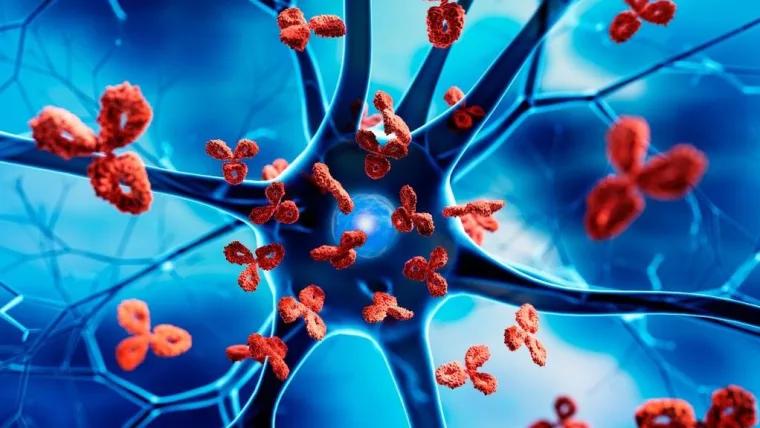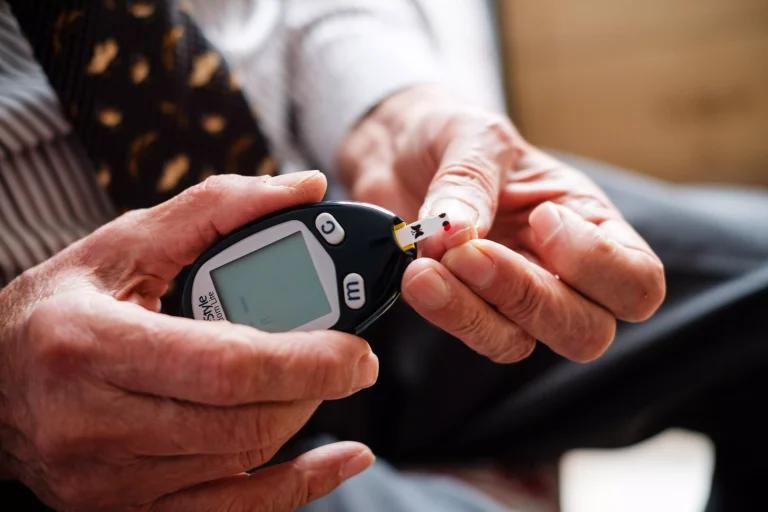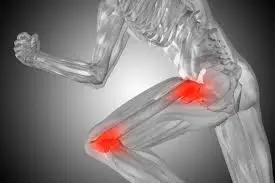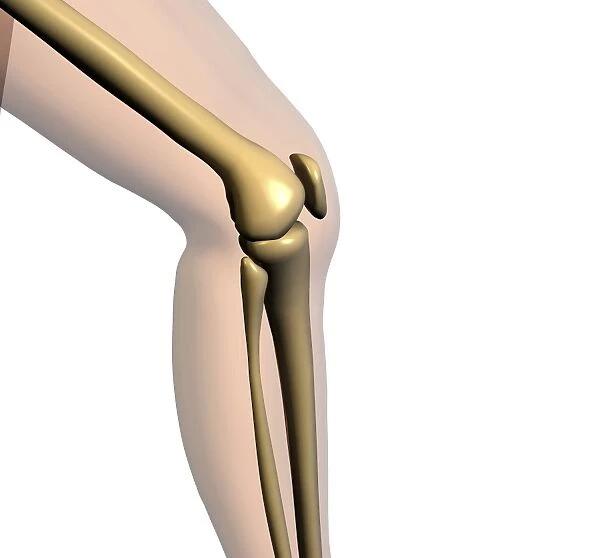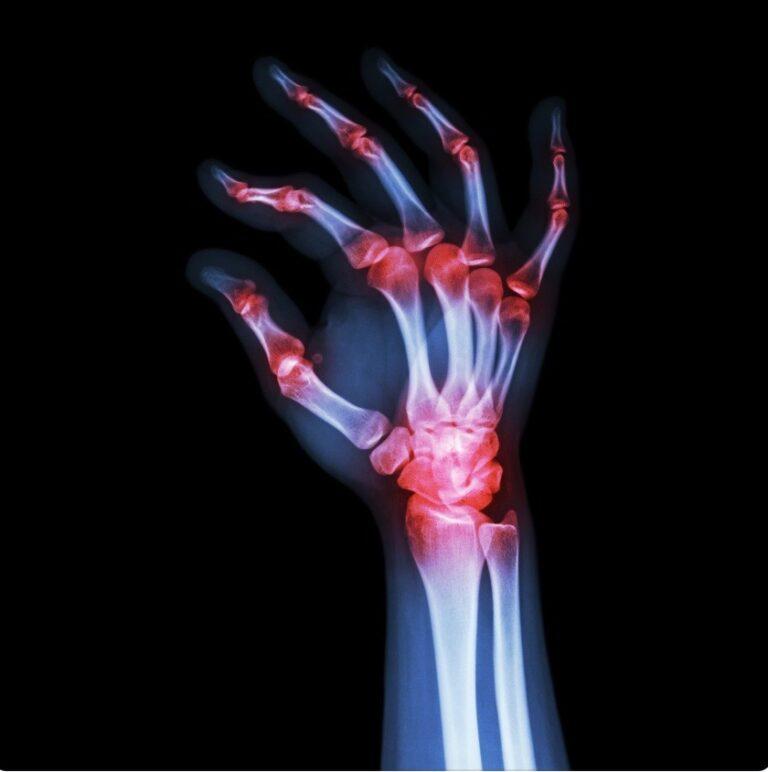Rheumatoid Arthritis
Get valuable insights into Rheumatoid Arthritis, including its causes, symptoms, prevention strategies, and treatment options, while also learning about how you can lower the cost of the medications used to treat Rheumatoid Arthritis.
MEDICAL INFORMATION
Rheumatoid Arthritis Key Facts
Related Medications
Rheumatoid arthritis (RA) is a chronic autoimmune disease and inflammatory disease that affects parts of the body, primarily the joints. It is characterized by inflammation, pain, and swelling in the joints, often leading to joint deformity and functional impairment. This comprehensive article will provide an overview of rheumatoid arthritis, including its causes, symptoms, diagnosis, treatment options, and management strategies.
What is the definition of rheumatoid arthritis (RA)?
Rheumatoid arthritis (RA) is a chronic disease characterized by inflammation and damage primarily affecting the joints. It is one of the most common forms of arthritis and typically leads to pain, swelling, stiffness, and loss of function in the affected joints. Unlike osteoarthritis, which is primarily caused by wear and tear on the joints, rheumatoid arthritis is an autoimmune disorder in which the body’s immune system mistakenly attacks its own healthy tissues, particularly the synovium (the lining of the joints). This chronic inflammation can also affect other organs and systems in the body, leading to systemic symptoms and complications. Rheumatoid arthritis is a progressive disease that can result in joint deformity and disability if left untreated.
What are the risk factors of rheumatoid arthritis (RA)?
Rheumatoid arthritis (RA) is a complex autoimmune disease influenced by a combination of genetic, environmental, and lifestyle factors. While the exact cause of RA is unknown, several risk factors have been identified that increase the likelihood of developing the condition. These risk factors include:
Genetic Predisposition
Having a family history of RA increases the risk of developing the disease. Certain genetic markers, such as specific variations in the human leukocyte antigen (HLA) genes, have been associated with an increased susceptibility to RA. However, having these genetic markers does not guarantee that an individual will develop the disease.
Gender
Women are more likely to develop RA than men. The disease affects women two to three times more frequently, with the peak incidence occurring during the childbearing years. Hormonal factors may play a role in the gender disparity observed in RA.
Age
Although RA can affect individuals at any age, it most commonly develops between the ages of 40 and 60. However, it can also occur in children and older adults.
Environmental Factors
Certain environmental factors, such as exposure to cigarette smoke, air pollution, and occupational hazards like silica dust, may increase the risk of developing RA. Additionally, infections, particularly chronic gum infections caused by periodontal bacteria, have been associated with an increased risk of RA.
Obesity
Obesity is a risk factor for developing RA, especially in women. Excess body weight places additional stress on the joints, increasing the risk of joint inflammation and damage.
Lifestyle Factors
Unhealthy lifestyle habits, such as a sedentary lifestyle, poor diet, and smoking, can contribute to the development and progression of RA. Conversely, adopting a healthy lifestyle, including regular exercise and a balanced diet, may help reduce the risk and severity of the disease.
It’s important to note that having one or more of these risk factors does not necessarily mean that an individual will develop RA. Conversely, individuals without any of these risk factors can still develop the disease. RA is a complex condition influenced by a combination of genetic and environmental factors, and further research is needed to fully understand its etiology and risk factors. If you have concerns about your risk of developing RA, it is best to consult with a healthcare professional who can assess your individual risk profile and provide appropriate guidance.
What are the causes and pathophysiology of rheumatoid arthritis (RA)?
The exact causes of rheumatoid arthritis (RA) are not fully understood. However, it is believed to involve a combination of genetic, environmental, and immune system factors. Here are the key factors involved in the development and pathophysiology of RA:
Autoimmune Response
Rheumatoid arthritis is considered an autoimmune disease, which means that the body’s immune system mistakenly attacks its own healthy tissues. In the case of RA, the immune system primarily targets the synovium, the membrane that lines the joints. The immune cells, particularly T-cells and B-cells, become activated and trigger an inflammatory response.
Genetic Factors
Certain genetic factors increase the risk of developing rheumatoid arthritis. Having specific human leukocyte antigen (HLA) genes, such as the HLA-DRB1 gene, is associated with an increased susceptibility to RA. However, genetic factors alone are not sufficient to cause the disease, and environmental triggers are also necessary.
Environmental Triggers
Environmental factors play a role in triggering rheumatoid arthritis in individuals with genetic susceptibility. Factors such as infections, smoking, hormonal changes, and exposure to certain occupational or environmental agents may contribute to the development of RA. These triggers can initiate or exacerbate the autoimmune response in genetically susceptible individuals.
Synovial Inflammation
In rheumatoid arthritis, the immune system’s attack on the synovium leads to chronic inflammation. The inflamed synovium becomes thickened and produces excessive amounts of synovial fluid, causing joint swelling, pain, and stiffness. This inflammation can eventually lead to the destruction of cartilage, bone erosion, and joint deformities.
Cytokines and Inflammatory Mediators
Inflammatory cells and the synovium release various cytokines and inflammatory mediators, such as tumor necrosis factor-alpha (TNF-alpha), interleukin-1 (IL-1), interleukin-6 (IL-6), and interleukin-17 (IL-17). These molecules further perpetuate the inflammatory response, contribute to joint damage, and promote the recruitment of immune cells to the affected joints.
Systemic Involvement
Rheumatoid arthritis is not limited to the joints alone. It can also involve other organs and systems in the body. Systemic inflammation associated with RA can affect the cardiovascular system, lungs, eyes, skin, and blood vessels. It can lead to complications such as rheumatoid nodules, vasculitis, pleurisy, pericarditis, and increased risk of cardiovascular diseases.
What are the signs and symptoms of rheumatoid arthritis (RA)?
The signs and symptoms of RA can vary in intensity and may fluctuate over time. Here are some common manifestations:
Joint Symptoms
- Painful joints: Often aching, throbbing, or sharp in nature
- Joint swelling: Swelling around the affected joints due to inflammation
- Joint stiffness: Morning stiffness lasting for more than an hour or stiffness after prolonged periods of inactivity
- Joint redness and warmth: The skin around affected joints may appear red and feel warm to the touch
- Joint deformities: Over time, RA can cause joint damage, leading to deformities, such as swan-neck deformity in the fingers or ulnar deviation of the wrists
General Symptoms
- Fatigue: A feeling of persistent tiredness and lack of energy
- Malaise: General discomfort or unease
- Fever: Low-grade fever in some individuals, particularly during disease flares
Extra-Articular Manifestations
- Rheumatoid nodules: Firm lumps under the skin, usually near joints or pressure points
- Eye symptoms: Dryness, redness, and pain in the eyes (Sjögren’s syndrome) or inflammation of the sclera (scleritis)
- Skin manifestations: RA-related skin conditions, such as rheumatoid vasculitis or rheumatoid nodules
- Respiratory symptoms: Inflammation of the lung tissue (rheumatoid lung disease) leading to cough, shortness of breath, or chest pain
- Cardiovascular complications: Increased risk of cardiovascular diseases, including atherosclerosis, heart valve abnormalities and heart disease
- Systemic inflammation: RA is associated with chronic systemic inflammation, which can impact multiple organs and systems in the body
It’s important to note that the presentation of RA can vary between individuals, and not all symptoms may be present in every case. Early diagnosis and prompt medical intervention are crucial for effective management and to prevent joint damage and functional impairment. If you are experiencing joint symptoms or suspect you may have rheumatoid arthritis, it is recommended to consult with a healthcare professional for a proper evaluation and diagnosis.
What are the stages of rheumatoid arthritis (RA)?
Early Stage
- In the early stage of RA, individuals may experience joint pain, swelling, and stiffness, particularly in the smaller joints of the hands and feet
- Morning stiffness lasting for more than 30 minutes is a common characteristic
- There may be occasional flares of symptoms followed by periods of remission
Moderate Stage
- In the moderate stage, joint inflammation and symptoms become more pronounced and widespread
- Pain, swelling, and stiffness may affect multiple joints, including larger joints like the knees, hips, and shoulders
- Symptoms may interfere with daily activities and mobility
- Increased fatigue and systemic symptoms, such as low-grade fever and loss of appetite, may be present
Severe Stage
- The severe stage of RA is characterized by more significant joint damage and functional limitations
- Joint deformities may develop, causing changes in joint alignment and impairing mobility
- Chronic pain, inflammation, and stiffness are prominent features
- Systemic symptoms may persist, affecting overall health and well-being
It’s important to note that RA is a progressive disease, and without appropriate treatment, joint damage and functional impairments can worsen over time. Early diagnosis and treatment are crucial for managing RA and preventing disease progression.
How is rheumatoid arthritis (RA) diagnosed?
The diagnosis of rheumatoid arthritis (RA) involves a combination of medical history, physical examination, laboratory tests, and imaging studies. The goal is to assess the presence of characteristic signs and symptoms, identify joint involvement, and rule out other conditions with similar presentations. Here are the key components of the diagnostic process
Medical History
The healthcare provider or rheumatologist will discuss your symptoms, their duration, and their impact on daily activities. They will also inquire about your medical history, family history of arthritis or autoimmune diseases, and any known risk factors for RA.
Physical Examination
The healthcare provider will examine your joints for signs of inflammation, such as swelling, tenderness, warmth, and restricted range of motion. They may also assess for other extra-articular manifestations, such as rheumatoid nodules or eye involvement.
Laboratory Tests
- Rheumatoid Factor (RF): This blood test detects the presence of an antibody called rheumatoid factor, which is found in the blood of some individuals with RA. However, RF can also be present in other conditions, so it is not specific to RA
- Anti-cyclic citrullinated peptide (anti-CCP) Antibodies: These blood tests measure the presence of specific antibodies associated with RA. Anti-CCP antibodies are more specific to RA and can aid in confirming the diagnosis
- Acute phase reactants: Blood tests for markers of inflammation, such as erythrocyte sedimentation rate (ESR) and C-reactive protein (CRP), can indicate the presence and severity of systemic inflammation
Imaging Studies
- X-rays: X-rays of the affected joints can reveal characteristic changes associated with RA, such as joint erosion, joint space narrowing, and bone damage
- Ultrasound: Ultrasound imaging can detect synovial inflammation, joint effusion, and soft tissue abnormalities
- Magnetic Resonance Imaging (MRI): MRI scans provide more detailed images of joint inflammation, cartilage damage, and bone erosion
Diagnostic Criteria
The American College of Rheumatology (ACR) has established classification criteria for RA, which consider the number and duration of joint involvement, laboratory markers, and symptom duration. These criteria help guide diagnosis and treatment decisions.
What is the classification criteria for rheumatoid arthritis in the UK & US?
In the United Kingdom, the classification criteria for rheumatoid arthritis (RA) are based on guidelines established by the National Institute for Health and Care Excellence (NICE) and the British Society for Rheumatology (BSR). In the United States, the classification criteria for rheumatoid arthritis (RA) are based on the guidelines established by the American College of Rheumatology (ACR) and the European League Against Rheumatism (EULAR). These criteria were developed to aid in the early diagnosis of RA and guide appropriate treatment decisions. The criteria include the following:
Joint Involvement
The presence of at least one swollen joint, defined as joint swelling not explained by another condition.
Duration of Symptoms
Symptoms should have been present for a minimum of six weeks.
Serological Markers
One of the following serological markers should be present
- Rheumatoid Factor (RF): Positive RF blood test result at any level
- Anti-cyclic citrullinated peptide (anti-CCP) antibodies: Positive anti-CCP antibody blood test result at any level
Acute Phase Reactants
Elevated levels of C-reactive protein (CRP) or erythrocyte sedimentation rate (ESR) as markers of inflammation.
Exclusion Criteria
Other conditions that can mimic RA, such as other forms of inflammatory arthritis, should be excluded.
It’s important to note that these classification criteria assist in identifying individuals who are likely to have RA and guide treatment decisions, particularly in the early stages of the disease. The diagnosis of RA is ultimately made based on a combination of clinical assessment, medical history, physical examination, and relevant laboratory and imaging tests.
What are treatment and management options for rheumatoid arthritis (RA)?
The treatment and management of rheumatoid arthritis (RA) aim to reduce symptoms, control inflammation, prevent joint damage, and improve overall quality of life. The approach to effective treatments may vary depending on the severity of the disease, individual patient factors, and response to interventions. Here are some commonly used treatment options for RA:
Medications
- Nonsteroidal Anti-inflammatory Drugs (NSAIDs): Help reduce pain and inflammation
- Disease-Modifying Anti-rheumatic Drugs (DMARDs): Medications that slow down the progression of RA and suppress the underlying immune system dysfunction. Examples include methotrexate, sulfasalazine, and leflunomide
- Biologic DMARDs: Target specific molecules involved in the inflammatory process, such as tumor necrosis factor (TNF) inhibitors, interleukin-6 (IL-6) inhibitors, and Janus kinase (JAK) inhibitors
- Corticosteroids: Potent anti-inflammatory medications that can provide quick relief but are typically used for short-term symptom control due to potential side effects
Physical Therapy
Exercises and physical therapy techniques help improve joint flexibility, strength, and function. They also assist in maintaining mobility and reducing pain.
Occupational Therapy
Occupational therapists can provide strategies and modifications to manage daily activities, preserve joint function, and improve overall quality of life.
Assistive Devices
The use of assistive devices such as braces, splints, or orthotics can help support affected joints and reduce pain.
Lifestyle Modifications
- Regular Exercise: Low-impact activities like swimming, cycling, or walking can help improve joint function, strengthen muscles, and maintain overall fitness
- Balanced Diet: A nutritious diet rich in fruits, vegetables, whole grains, and lean proteins can help maintain overall health and support the management of RA
- Stress Management: Techniques such as relaxation exercises, meditation, and counseling can help manage stress, which may contribute to symptom flares
Surgical Interventions
In severe cases of RA, joint damage may necessitate surgical procedures such as joint replacement or joint fusion to improve mobility and reduce pain.
What medications are used in rheumatoid arthritis (RA)?
Nonsteroidal Anti-inflammatory Drugs (NSAIDs)
- Ibuprofen (Advil, Motrin)
- Naproxen (Aleve)
- Celecoxib (Celebrex)
Disease-Modifying Antirheumatic Drugs (DMARDs)
- Methotrexate (Rheumatrex, Trexall)
- Leflunomide (Arava)
- Hydroxychloroquine (Plaquenil)
- Sulfasalazine (Azulfidine)
Biologic Response Modifiers (Biologics)
- Tumor Necrosis Factor (TNF) inhibitors:
- Adalimumab (Humira)
- Etanercept (Enbrel)
- Infliximab (Remicade)
- Certolizumab pegol (Cimzia)
- Golimumab (Simponi)
- Other biologics:
- Abatacept (Orencia)
- Rituximab (Rituxan)
- Tocilizumab (Actemra)
- Sarilumab (Kevzara)
Janus Kinase (JAK) Inhibitors
- Tofacitinib (Xeljanz)
- Baricitinib (Olumiant)
- Upadacitinib (Rinvoq)
Corticosteroids
- Prednisone
- Methylprednisolone
Supplements
- Glucosamine & Chondroitin
- omega-3 fatty acids
What are the complications of rheumatoid arthritis (RA)?
Below are some common complications associated with RA
Joint Damage and Deformities
Persistent inflammation in the joints can lead to joint damage, erosion of cartilage, and bone loss. This can result in joint deformities, reduced range of motion, and functional impairments.
Rheumatoid Nodules
These are firm lumps that develop under the skin, often near joints or pressure points. They are caused by inflammation and can range in size. Nodules are usually painless, but they can sometimes become tender or infected.
Cardiovascular Complications
RA increases the risk of cardiovascular diseases, including heart attack, stroke, and atherosclerosis (narrowing of the arteries). Chronic inflammation and certain RA-related factors contribute to an increased risk of cardiovascular problems.
Lung Complications
RA can affect the lungs and cause conditions such as interstitial lung disease, pleurisy (inflammation of the lining around the lungs), and nodules in the lungs. These complications may lead to breathing difficulties, coughing, and decreased lung function.
Eye Problems
Dry eyes, inflammation of the eyes (scleritis and uveitis), and an increased risk of glaucoma are common in individuals with RA. Prompt treatment and regular eye exams are important to manage these complications.
Osteoporosis:
Chronic inflammation and the use of corticosteroids for RA can increase the risk of osteoporosis, a condition characterized by reduced bone density and an increased risk of fractures.
Anemia
Anemia, characterized by a decrease in red blood cell count, can occur in RA due to chronic inflammation, nutrient deficiencies, or medication side effects.
Increased Infection Risk
RA and certain RA medications can weaken the immune system, making individuals more susceptible to infections.
Promising research and future direction of rheumatoid arthritis (RA)?
Rheumatoid arthritis (RA) research continues to advance the understanding of the disease and improve treatment options. Several promising areas of research and future directions are being explored:
Precision Medicine
The development of precision medicine approaches aims to tailor treatment based on an individual’s specific characteristics, including genetic and molecular factors. This approach could lead to more targeted therapies and improved treatment outcomes.
Immune Modulation
Researchers are investigating new drugs and therapies that target specific immune pathways involved in RA. This includes exploring the role of different cytokines, such as interleukin-17 (IL-17) and interleukin-23 (IL-23), as potential therapeutic targets.
Personalized Risk Assessment
Efforts are underway to develop tools and biomarkers that can predict disease progression, identify patients at higher risk of developing severe RA, and guide treatment decisions early on.
Early Intervention
Early diagnosis and intervention have a significant impact on RA outcomes. Research is focused on identifying reliable biomarkers and imaging techniques that can detect RA at its earliest stages, enabling timely intervention and potentially preventing joint damage.
Combination Therapies
Investigating the effectiveness of combining different drugs or treatment approaches to achieve better disease control and improved patient outcomes is an active area of research. Combination therapies may involve traditional DMARDs, targeted biologics, or newer small molecule inhibitors.
Regenerative Medicine
Researchers are exploring the use of stem cells and tissue engineering techniques to regenerate damaged joint tissues in RA. This field shows promise for potentially reversing joint damage and improving long-term outcomes.
Patient-reported Outcomes
There is increasing recognition of the importance of incorporating patient-reported outcomes into clinical trials and treatment evaluations. Understanding the impact of RA on patients’ quality of life, physical function, and psychological well-being is crucial for holistic disease management.
Digital Health Technologies
The use of digital health technologies, including smartphone apps, wearable devices, and telemedicine, holds promise for remote monitoring, patient education, and personalized care delivery in RA management.
What rheumatoid arthritis (RA) support organisations are there available to support me in the UK?
- National Rheumatoid Arthritis Society (NRAS): NRAS is a UK-based charity organization dedicated to supporting individuals with RA. They provide a helpline, information resources, support groups, and educational materials. They also offer self-management programs, exercise classes, and advocacy initiatives
- Arthritis Research UK: Arthritis Research UK (now called Versus Arthritis) is a charity organization that funds research and provides information and support for various forms of arthritis, including RA. They offer resources, research updates, and access to clinical trials. They also fund research projects aimed at improving the understanding and treatment of RA
- Versus Arthritis: Versus Arthritis is a UK charity organization that offers support and resources for individuals with different forms of arthritis, including RA. They provide information materials, a helpline, online communities, and local support groups. They also fund research and advocate for improved arthritis care
What rheumatoid arthritis (RA) support organisations are there available to support me in the US?
- Arthritis Foundation: The Arthritis Foundation is a national nonprofit organization dedicated to supporting individuals with all forms of arthritis, including RA. They provide resources, educational materials, and online communities. They also organize events and fundraising initiatives to raise awareness and funds for arthritis research and advocacy
- Rheumatoid Arthritis Support Network (RASN): RASN is an online community and support network for individuals with RA. They offer a platform for sharing experiences, information, and resources related to RA. They also provide educational materials and host online forums and support groups
- CreakyJoints: CreakyJoints is an online patient community and advocacy organization for individuals with various forms of arthritis, including RA. They provide information resources, educational materials, online forums, and access to research studies. They also advocate for improved healthcare and policies related to arthritis
Medical Disclaimer
NowPatient has taken all reasonable steps to ensure that all material is factually accurate, complete, and current. However, the knowledge and experience of a qualified healthcare professional should always be sought after instead of using the information on this page. Before taking any drug, you should always speak to your doctor or another qualified healthcare provider.
The information provided here about medications is subject to change and is not meant to include all uses, precautions, warnings, directions, drug interactions, allergic reactions, or negative effects. The absence of warnings or other information for a particular medication does not imply that the medication or medication combination is appropriate for all patients or for all possible purposes.






